Showing 13–24 of 39 results
-
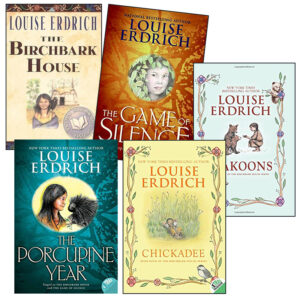
Rated 5.00 out of 5
$59.00
Save $4.50
This First Nations perspective of the time of Little House on the Prairie, gives a sweet alternate view to the pioneering stories. These books do not disappoint!
Omakayas, a young Ojibway girl, lives with her family on an island in Lake Superior around 1847.
- ISBN: 9780123453563
- Author: Louise Erdich
- Ages: 8-12
-
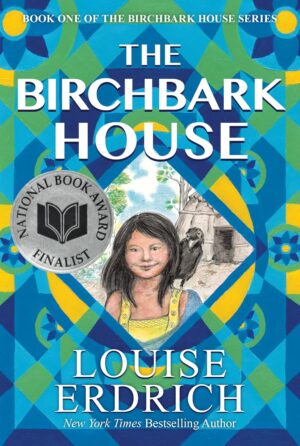
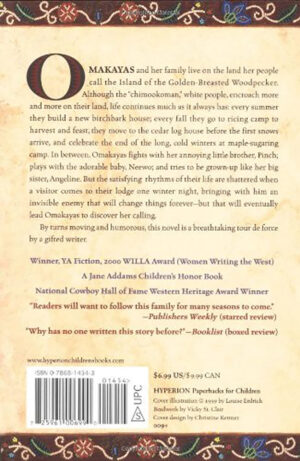
Rated 5.00 out of 5
$12.50
Omakayas, a young Ojibway girl, lives with her family on an island in Lake Superior around 1847. Erdrich, drawing on her family’s history, tells us the story from the First Nations perspective.
A fresh new look for this National Book Award finalist by Pulitzer Prize–winning novelist Louise Erdrich! This is the first installment in an essential nine-book series chronicling one hundred years in the life of one Ojibwe family and includes charming interior black-and-white artwork done by the author. (5 books in series with more to come)
-
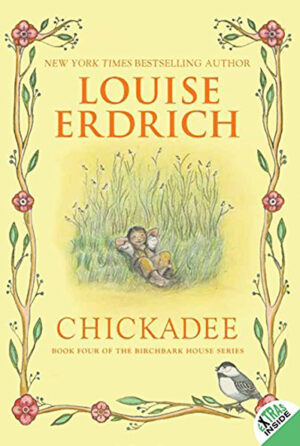
$12.50
Twin brothers Chickadee and Makoons have done everything together since the day they were born—until the unthinkable happens and the brothers are separated.
- ISBN: 9780060577926
- Author: Louise Erdrich
- 224 pages
- Ages: 8-12
-
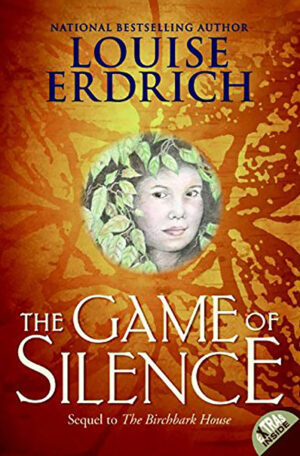
$12.50
Her name is Omakayas, or Little Frog, because her first step was a hop, and she lives on an island in Lake Superior. One day in 1850, Omakayas′s island is visited by a group of mysterious people. From them, she learns that the chimookomanag, or white people, want Omakayas and her people to leave their island and move farther west.
That day, Omakayas realizes that something so valuable, so important that she never knew she had it in the first place, could be in danger: Her way of life. Her home.
- ISBN: 9780064410298
- Author: Louise Erdrich
- 288 pages
- Ages: 8-12
-
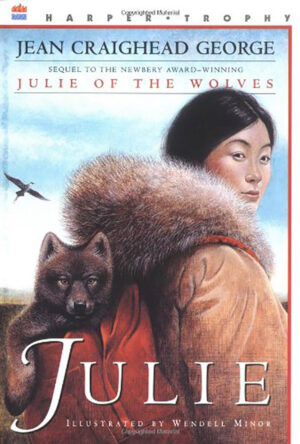
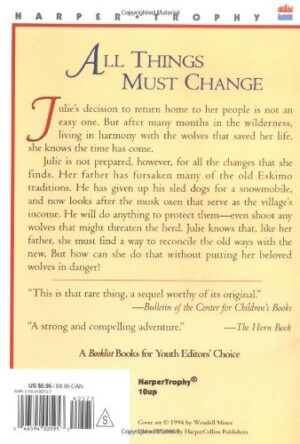
$12.50
This sequel to George’s Newbery Medal-winning Julie of the Wolves continues the story of Julie Edwards Miyax Kapugen, now living in the Eskimo village of Kangik with her father, Kapugen. Julie worries that her father will shoot the wolves if they threaten the herd he is raising as part of the village’s industry.
Julie’s decision to return home to her people is not an easy one. But after many months in the wilderness, living in harmony with the wolves that saved her life, she knows the time has come.
-
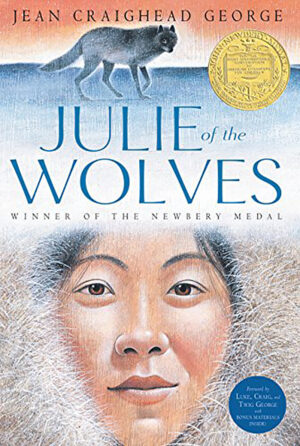
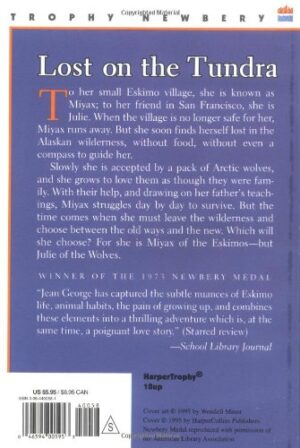
$12.50
To her small Eskimo village, she is known as Miyax: to her penpal in San Francisco, she is Julie. After an incident, Miyax runs away, only to find herself lost in the Alaskan wilderness.
With food and time running out, Miyax tries to survive by copying the ways of a pack of wolves. Accepted by their leader and befriended by a feisty pup named Kapu, she soon grows to love her new wolf family. Life in the wilderness is a struggle, but when she finds her way back to civilization, Miyax is torn between her old and new lives. Is she Miyax of the Eskimos, or Julie of the wolves?
-
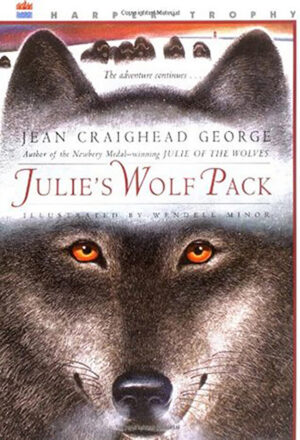
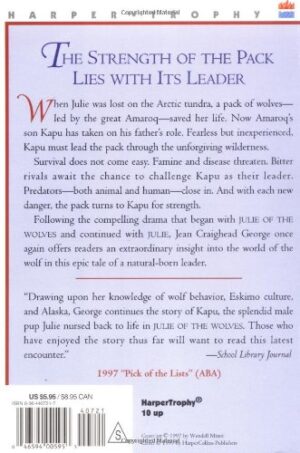
$12.50
From the author of the Newbery Medal–winning Julie of the Wolves and its sequel, Julie, comes a third exciting adventure about the wolf pack that saved the life of a young girl when she was lost on the tundra. The story of Julie continues in Julie’s Wolf Pack from the point of view of the wolves who rescued her.
-
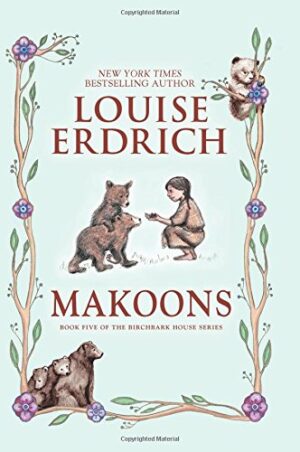
$12.50
Named for the Ojibwe word for little bear, Makoons and his twin, Chickadee, have traveled with their family to the Great Plains of Dakota Territory. There they must learn to become buffalo hunters and once again help their people make a home in a new land. But Makoons has had a vision that foretells great challenges—challenges that his family may not be able to overcome.
Based on Louise Erdrich’s own family history, this fifth book in the series features black-and-white interior illustrations, a note from the author about her research, as well as a map and glossary of Ojibwe terms.
- ISBN: 9780060577957
- Author: Louise Erdrich
- 176 pages
- Ages: 8-12
-
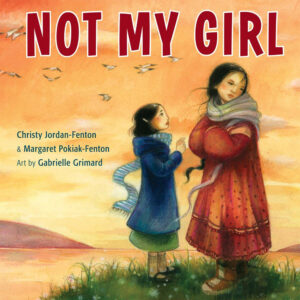
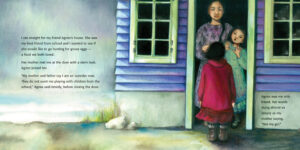
$9.99
Based on the true story of Margaret Pokiak-Fenton, and complemented by evocative illustrations, Not My Girl makes the original, award-winning memoir, A Stranger at Home, accessible to younger children. It is also a sequel to the picture book When I Was Eight.
-
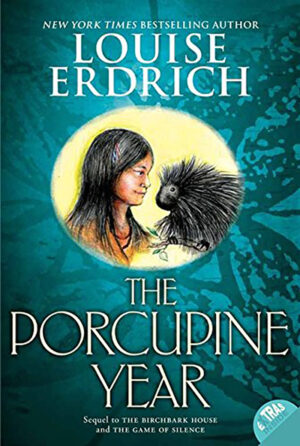
$12.50
Here follows the story of a most extraordinary year in the life of an Ojibwe family and of a girl named “Omakayas,” or Little Frog, who lived a year of flight and adventure, pain and joy, in 1852.
- ISBN: 9780064410304
- Author: Louise Erdrich
- 193 pages
- Ages: 8-12
-
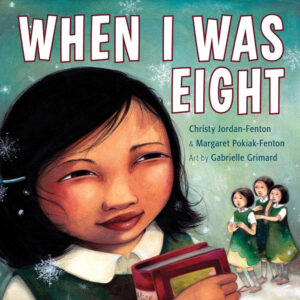
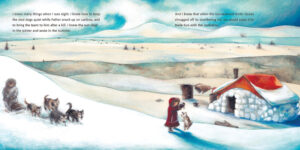
$9.99
Olemaun is eight and knows a lot of things. But she does not know how to read. Ignoring her father’s warnings, she travels far from her Arctic home to the outsiders’ school to learn. The nuns at the school call her Margaret. They cut off her long hair and force her to do menial chores, but she remains undaunted. Her tenacity draws the attention of a black-cloaked nun who tries to break her spirit at every turn. But the young girl is more determined than ever to learn how to read.
Based on the true story of Margaret Pokiak-Fenton, and complemented by stunning illustrations, When I Was Eight makes the bestselling Fatty Legs accessible to younger readers. Now they, too, can meet this remarkable girl who reminds us what power we hold when we can read.
-
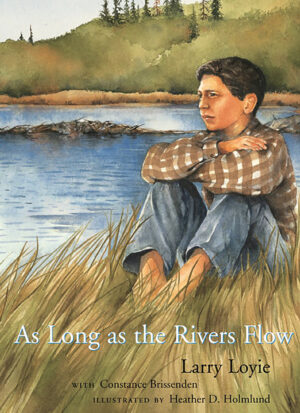
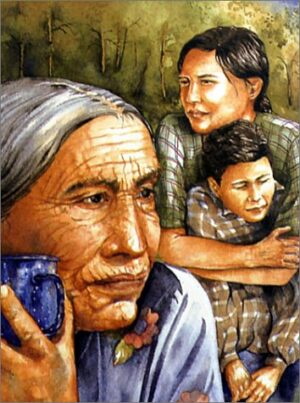
$12.99
As Long as the Rivers Flow is the story of Larry Loyie’s last summer before entering residential school. It is a time of learning and adventure. He cares for an abandoned baby owl and watches his grandmother make winter moccasins. He helps the family prepare for a hunting and gathering trip.



















